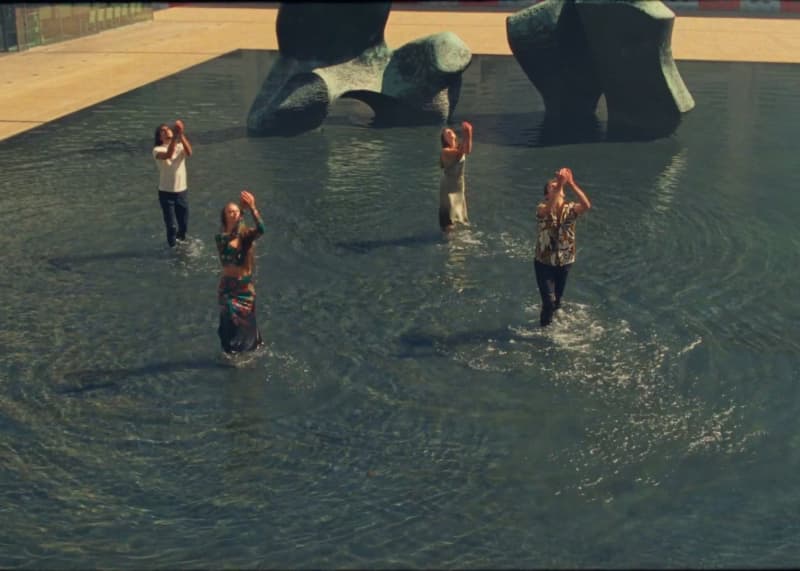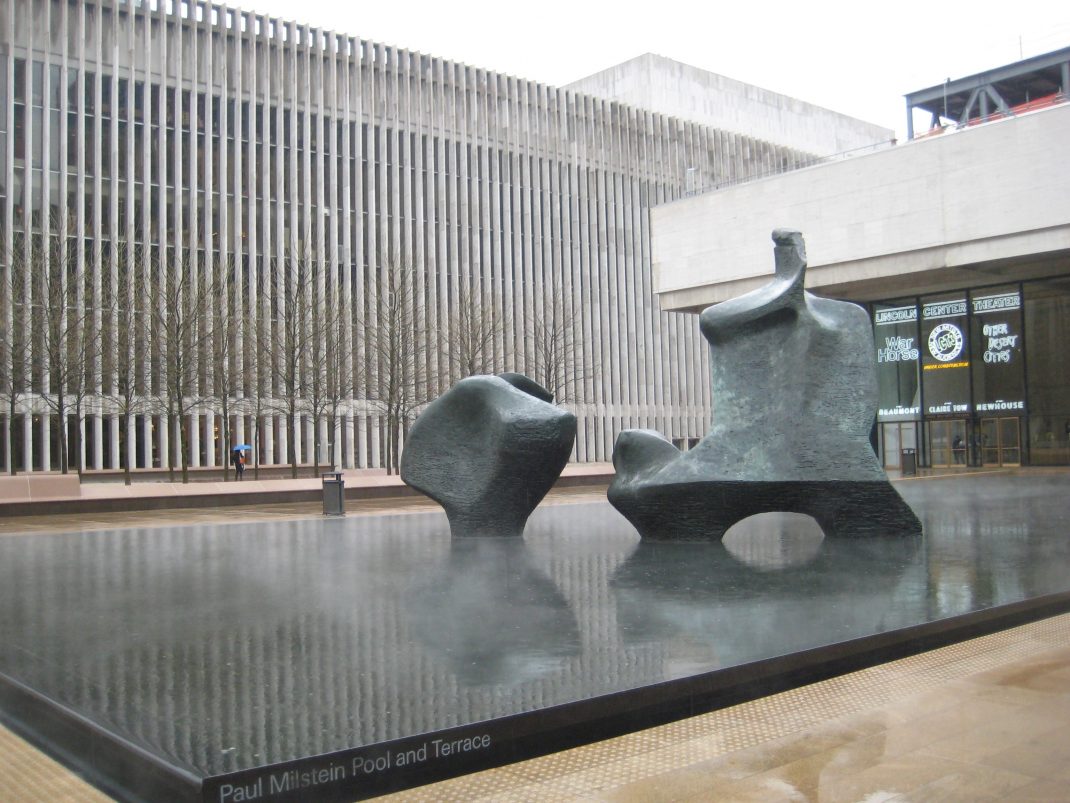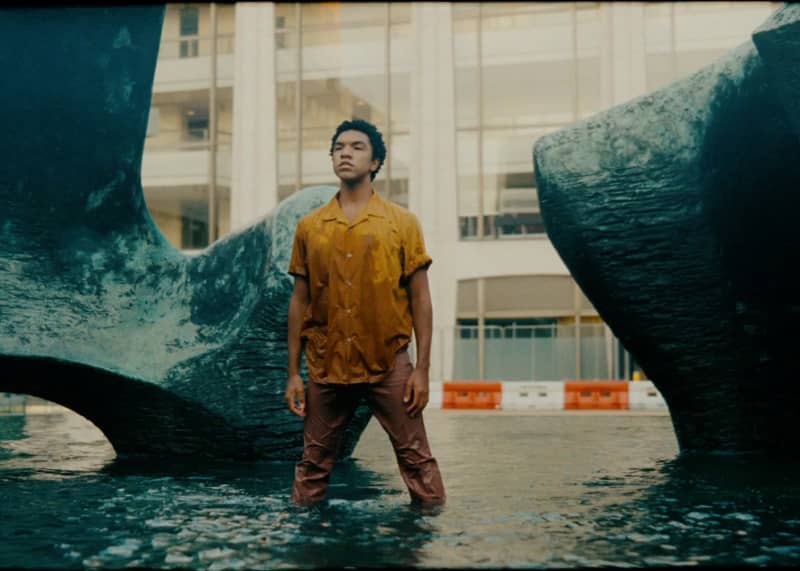New York City Ballet’s recent digital offering was a remarkable collection of five short films by five different choreographers, filmed mostly around the Lincoln Center area. The films brought to the fore some fascinating issues about dance, about dance for film, and, during the discussion that followed each of the works, about how dancers are managing the pandemic facing us all. They also contained some personal reminders of that area and I could almost see, on one occasion, the apartment block where I lived on West 62nd Street while working at Lincoln Center. But, to the dance!
The reflecting pool that sits centre stage in the Plaza was used in a major way by two of the choreographers. Water Rite, a solo dance, was choreographed by Jamar Roberts from Alvin Ailey American Dance Theatre where he is a dancer and resident choreographer, and was performed by NYCB corps de ballet dancer, Victor Abreu. It was interesting to watch how the Henry Moore sculpture, an essential component of the pool, was deployed as part of the choreography. At times it formed a kind of frame for Abreu’s dancing, on other occasions it was a backdrop, and occasionally it was like a stationary prop. Choreographically the dance was full of energy with a lot of turning, which of course threw up the water.
But the big surprise came at the very end. As Abreu slowed down and it seemed like the end had arrived, suddenly we saw a long shot of the pool with Abreu and the sculpture in the centre and with six musicians and their instruments —two violins, a viola, a cello, a double bass and a flute—spread out in the pool. Yes, the sextet of musicians who had accompanied the dancer with Inflatedbyspinning by composer Ambrose Akinmusire, were standing in the pool too. A great ending.
The other work that used the pool in a major way was new song choreographed by Andrea Miller, founder of the Brooklyn-based company Gallim. It was performed by four dancers to Manifiesto by Chilean composer Victor Jara. The very dance-able folkloric feel to the music was taken up beautifully by Miller and especially well danced by all four dancers, but especially by Unity Phelan. She opened the dancing with a solo around a sculpture by Alexander Calder, which is situated just at the entrance to the Library for the Performing Arts. As with Water Rite, the sculpture became an integral element in the opening part of the dance. Phelan was soon joined by three other dancers and eventually they transitioned into the pool to dance with the Henry Moore sculpture where their glorious freedom of movement continued.
New song was my favourite of the five works and I loved the discussion afterwards in which Phelan talked about letting the water inform the movement.

Justin Peck’s work Thank you, New York, involved four dancers who appeared in four separate locations around New York—a deserted street, a terminal building, a rooftop and a park overlooking the river. Its focus moved back and forth between venues and its choreography was exceptionally varied with lots of turning steps, which featured strongly in the closing moments of the piece.
The most interesting aspect of Sidra Bell’s work Pixelation in a wave (within wires) was the comment about the inspiration behind the work: ‘The exquisitely tenuous correspondence between structural and human forms.’ It too took place around the Lincoln Center Plaza but choreographically it did not have the excitement of the works by Peck, Miller and Roberts. As for Pam Tanowitz’s Solo for Russell, for my liking it was too static and involved a lot of posing rather than moving.
Below is an image of the pool and the sculpture in Lincoln Center Plaza taken on a very wet, cold day in March 2011. How beautiful it was to see the site being brought to life by dance in 2020.

Michelle Potter, 8 November 2020
Featured image: Victor Abreu in a moment from Jamar Roberts’ Water Rite. Screenshot, New York City Ballet, 2020
